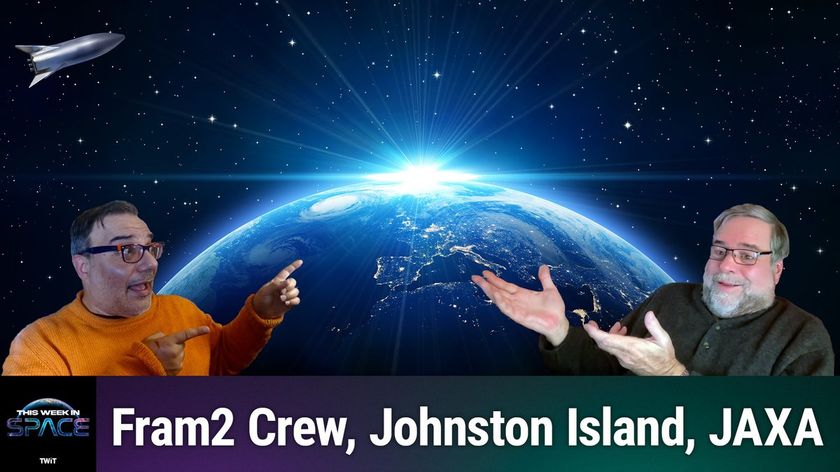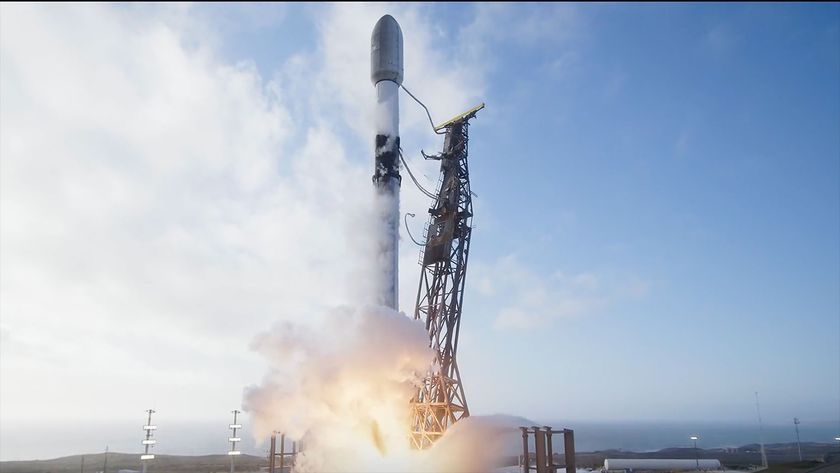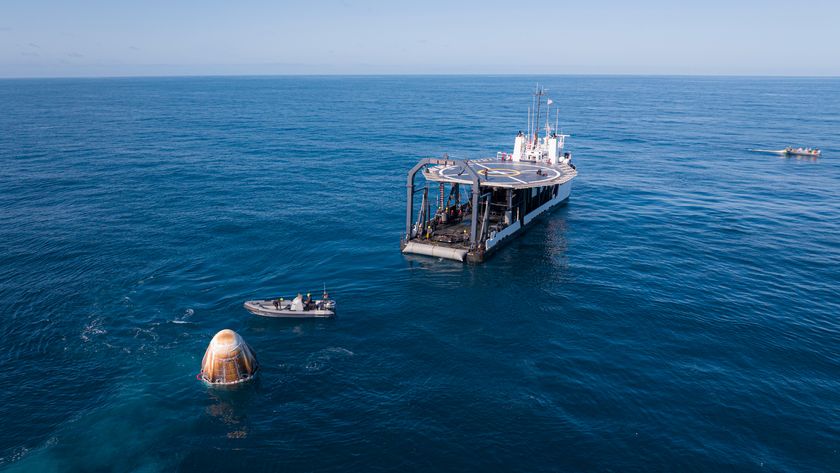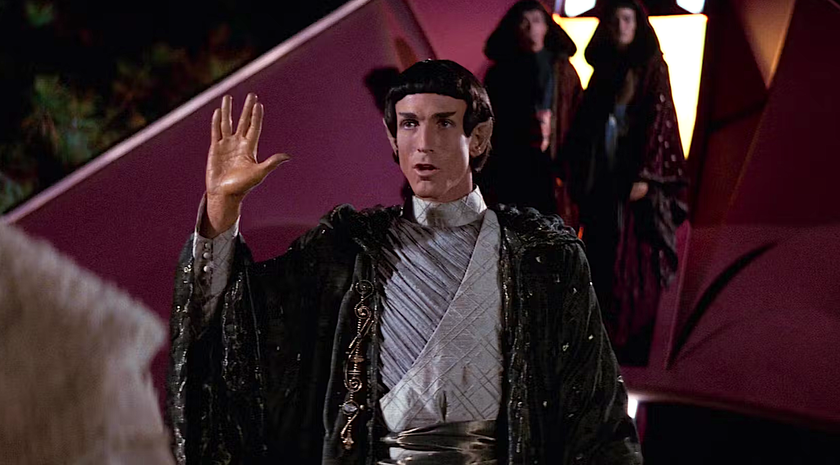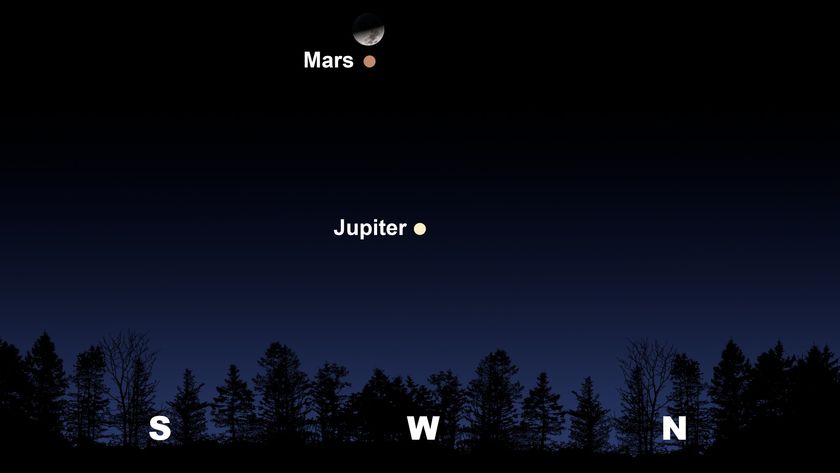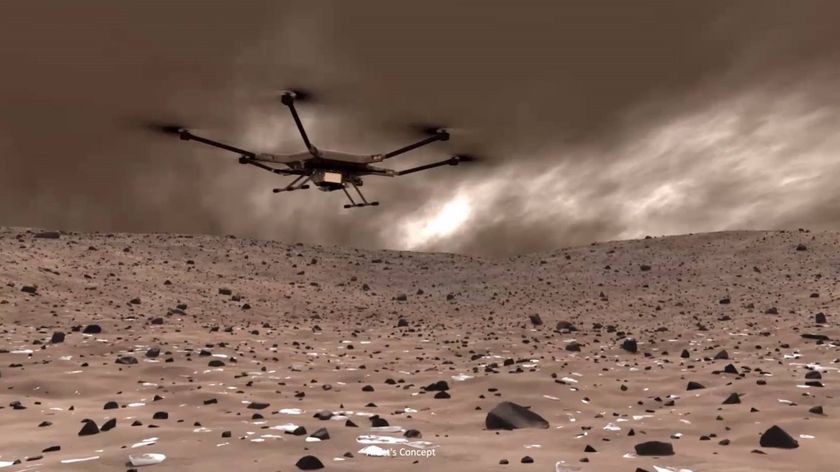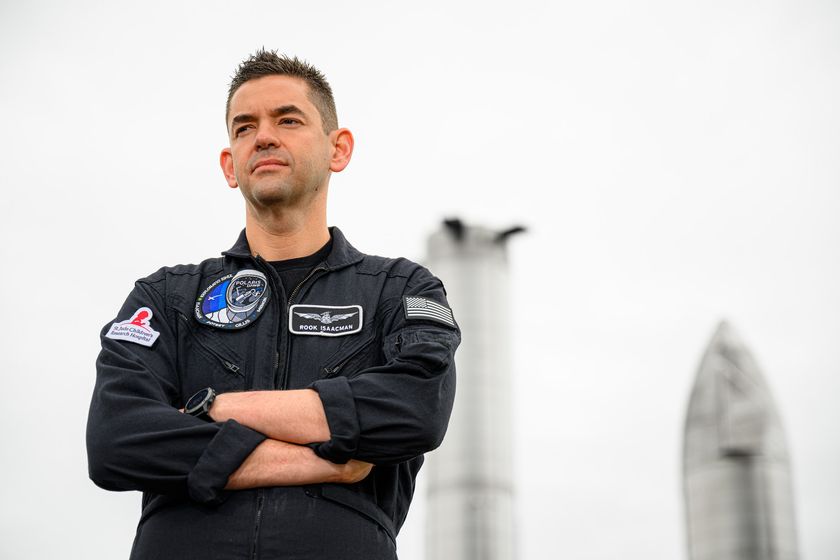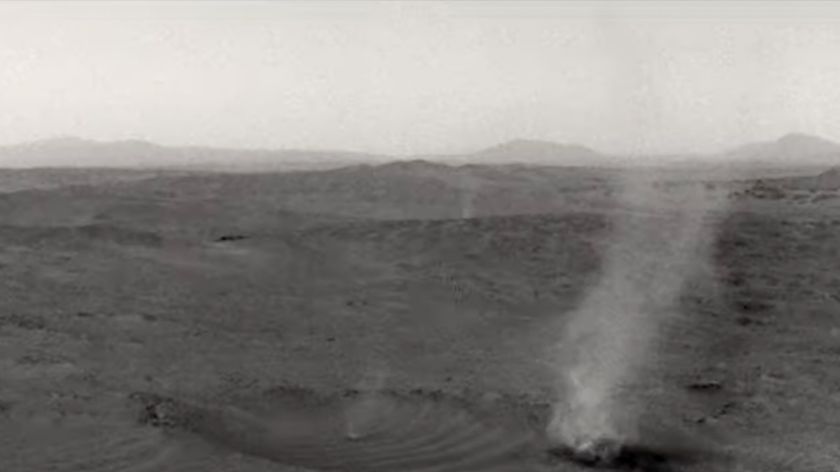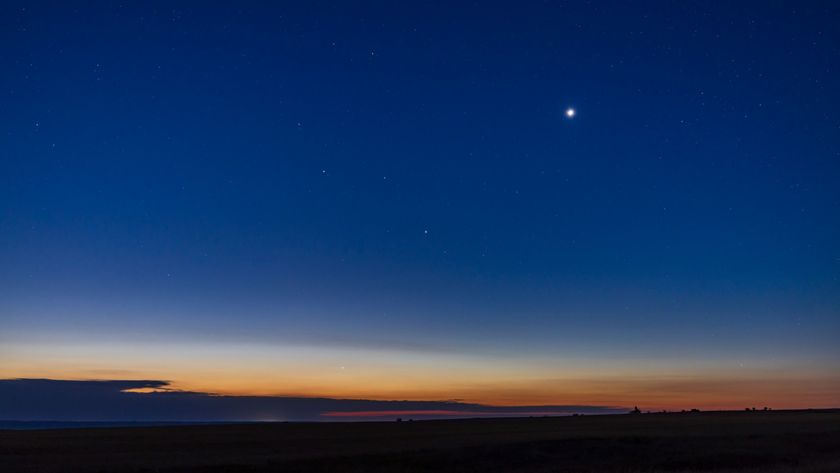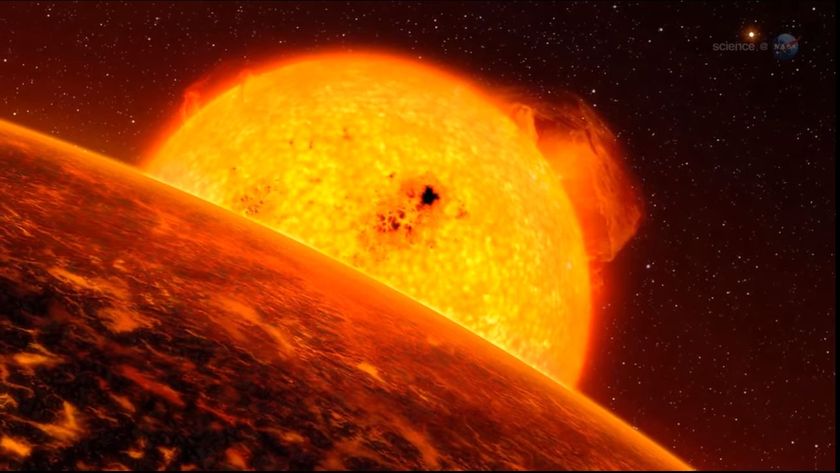Spacewalkers Install Massive Cooling Tank on Space Station
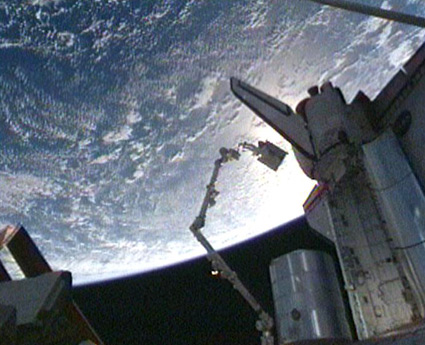
This story was updated at 3:09 a.m. EDT.
Two spacewalking astronauts tackled a tough coolant tank swap at the International Space Station late Thursday, one that required them to move hefty components as massive as small cars.
Astronauts Danny Olivas and Christer Fuglesang spent about 6 1/2 hours working outside the space station to install the new tank full of ammonia coolant and stow an old one aboard their shuttle Discovery.
The spacewalk occurred as a large piece of space junk — part of a 3-year-old European rocket — headed toward the station and shuttle, but the derelict object posed no collision risk at all to the two spacecraft and their crews, NASA officials said. The orbital debris is expected to make its closest approach to the station and shuttle Friday morning.
Minor spacesuit glitches delayed Thursday night's spacewalk by nearly an hour, but the astronauts made up for lost time and eventually got well ahead of schedule. They began the planned 6 1/2-hour spacewalk at 6:12 p.m. EDT (2212 GMT) as the station and shuttle flew 225 miles (362 km) above China.
"That was a beautiful sunrise," Olivas said at one point. "It was incredible."
New tank for station
Olivas and Fuglesang swiftly tackled their main orbital chore to install a 1,700-pound (772-kg) tank full of toxic ammonia coolant to the space station's port side.
Get the Space.com Newsletter
Breaking space news, the latest updates on rocket launches, skywatching events and more!
Olivas and different crewmate removed an old ammonia tank from the station in a Tuesday spacewalk. That tank had been on the station since 2002 and is nearly empty. It weighs about 1,300 pounds (589 kg).
"If you can almost picture someone handing around a Mini Cooper car between the two of them, it's about the similar weight and mass of the tank they were handing between each other," said Zeb Scoville, lead spacewalk officer for Discovery's mission.
The tanks are vital components of the space station's cooling system. They are also huge: each about 5 feet long, 7 feet wide and 4 feet tall (1.5 m by 2.1 m by 1.2 m).
"It takes a lot of concentration to keep this thing still," Olivas said as he held the old tank.
Olivas and Fuglesang packed the empty tank in Discovery's payload bay so it can be returned to Earth for an overhaul. Fuglesang, a Swedish astronaut representing the European Space Agency, spent much of the spacewalk on the space station's robotic arm, moving the ammonia tanks and enjoying the view.
"Thanks for a long, nice ride," he told crewmate Kevin Ford, who controlled the arm from inside the station.
The spacewalkers were so far ahead of schedule — nearly a full hour — that Mission Control gave them some extra maintenance chores before letting them back inside the International Space Station. They installed some lens covers on station video cameras among other tasks.
While the spacewalkers worked outside, the 11 astronauts inside the station moved new cargo delivered by Discovery into the orbiting lab.
Thursday's spacewalk was the 132nd dedicated to space station construction or maintenance and the fourth career excursions for both Olivas and Fuglesang.
It was the second of three spacewalks on tap during Discovery's 13-day mission, which is delivering nearly 8 tons of supplies and science equipment to the space station, as well as a treadmill named after comedian Stephen Colbert.
The next spacewalk is set for Saturday. All 13 astronauts aboard the space station and Discovery are expected to take some time off on Friday.
SPACE.com is providing complete coverage of Discovery's STS-128 mission to the International Space Station with Managing Editor Tariq Malik and Staff Writer Clara Moskowitz in New York. Click here for shuttle mission updates and a link to NASA TV.
Join our Space Forums to keep talking space on the latest missions, night sky and more! And if you have a news tip, correction or comment, let us know at: community@space.com.

Tariq is the Editor-in-Chief of Space.com and joined the team in 2001, first as an intern and staff writer, and later as an editor. He covers human spaceflight, exploration and space science, as well as skywatching and entertainment. He became Space.com's Managing Editor in 2009 and Editor-in-Chief in 2019. Before joining Space.com, Tariq was a staff reporter for The Los Angeles Times covering education and city beats in La Habra, Fullerton and Huntington Beach. In October 2022, Tariq received the Harry Kolcum Award for excellence in space reporting from the National Space Club Florida Committee. He is also an Eagle Scout (yes, he has the Space Exploration merit badge) and went to Space Camp four times as a kid and a fifth time as an adult. He has journalism degrees from the University of Southern California and New York University. You can find Tariq at Space.com and as the co-host to the This Week In Space podcast with space historian Rod Pyle on the TWiT network. To see his latest project, you can follow Tariq on Twitter @tariqjmalik.
